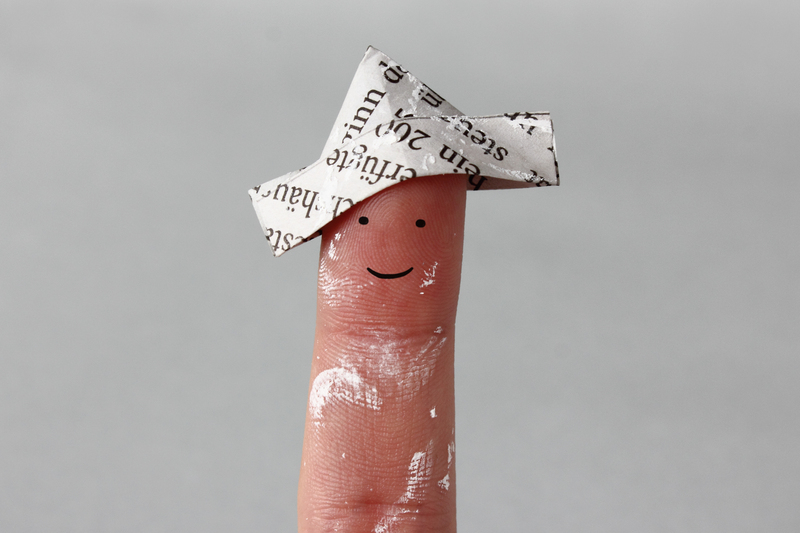The Complex Process Behind Recycling Plastic: An In-Depth Guide
Recycling plastic helps protect our environment, conserve resources, and reduce the vast amount of waste produced worldwide, but the journey from a discarded bottle to a reusable material is anything but simple. The intricate and multistage process of plastic recycling involves advanced technology, meticulous sorting, and global cooperation. In this comprehensive guide, we'll peel back the layers to show how plastic recycling facilities transform trash into treasure and why every step matters.

Why Recycling Plastic Is Essential
Plastic products are ingrained in nearly every aspect of modern life. From packaging to construction materials, electronics, and medical devices, plastics are everywhere -- and so is plastic waste. Globally, over 380 million tons of plastic are produced each year, but only a fraction is effectively recycled.
- Environmental Impact: Improper disposal leads to plastic pollution in oceans and landscapes, harming wildlife and contaminating food chains.
- Resource Conservation: Recycling reduces the demand for new raw materials, such as crude oil and natural gas, used in plastic manufacturing.
- Energy Savings: Producing recycled plastic often uses less energy than manufacturing virgin plastic, lowering greenhouse gas emissions.
Understanding the complex process behind recycling plastic helps motivate communities and businesses to participate more actively in the cycle.
Stages of the Plastic Recycling Process
The recycling process for plastics involves multiple stages, each pivotal for ensuring the recovery of usable material. Here's how post-consumer plastic finds new life:
1. Collection and Transportation
The plastic recycling journey begins at the consumer level. Individuals, businesses, and institutions deposit used plastics in designated recycling bins. Municipalities and private companies then collect these materials, usually combining them with recyclables from other sources.
- Residential curbside pickups
- Drop-off centers
- Commercial and industrial recycling programs
Once gathered, mixed recyclable plastics are transported to material recovery facilities (MRFs), where the real work begins.
2. Sorting: The Heart of the Recycling Chain
Not all plastics are created equal. Different types of plastic, known as polymers, have unique properties and recycling requirements. At the MRF, sorting plastics by type and cleanliness is essential for the quality of the end product.
- Manual Sorting: Workers inspect and remove items that cannot be recycled or that may contaminate batches.
- Mechanical Sorting: Advanced machines -- using sieves, air jets, and optical sensors -- separate plastics by size, shape, color, and resin type.
- Resin Identification Codes (RICs): Most plastics are labeled with a number (1-7) indicating the type of polymer, such as PET, HDPE, or PVC, which guides the sorting process.
Proper sorting ensures that the plastics moving forward in the recycling process are compatible and will produce high-quality recycled resin.
3. Cleaning and Shredding
Before being transformed, plastics must be cleaned thoroughly to remove labels, adhesives, food residue, and other contaminants. This stage is crucial -- dirty or mixed plastics can reduce the quality and usability of recycled products.
- Washing: A combination of washing and rinsing separates foreign materials.
- Granulating or Shredding: Cleaned plastic items are chopped into small flakes or pellets for easier processing.
The result is batches of pure plastic fragments, ready for further treatment.
4. Identification and Separation of Different Plastics
Recycled plastics often consist of various polymers that must be further separated to maintain integrity. Technologies used in this critical stage include:
- Float-Sink Tanks: Plastics are immersed in water or other liquids; certain types float while others sink, aiding separation.
- Air Classifiers: Lighter and heavier plastic pieces are separated using air streams.
- NIR (Near-Infrared) Sorting: Sophisticated scanners identify plastics by their molecular signature.
This step guarantees that the final recycled material will be uniform, with minimal impurities.
5. Compounding and Pelletizing
The pure, sorted flakes undergo melting and extrusion. High temperatures and specialized machines called extruders turn the plastic fragments into a molten state, which is then pushed through perforated plates to form strands.
- Cooling: The strands are cooled, typically in water baths.
- Pelletizing: The cooled strands are chopped into uniform pellets, the main form used by manufacturers in new products.
This pelletized recycled plastic forms the raw material for a wide variety of applications, from packaging to textiles and construction materials.
Advanced Techniques in Plastic Recycling
As plastics and plastic products become more complex, the recycling industry has developed new technologies to overcome challenges and increase efficiency.
Chemical Recycling: Breaking Plastics Down
Chemical recycling -- also known as advanced recycling -- involves breaking down plastic polymers into their original monomers or other basic chemicals. This allows for the production of recycled plastic indistinguishable from virgin material and can handle plastics that are otherwise hard to recycle.
- Pyrolysis: Heating plastics in the absence of oxygen to produce fuel and chemical feedstocks.
- Depolymerization: Using heat, chemicals, or enzymes to revert polymers to monomers.
- Solvolysis: Using solvents to dissolve and separate individual plastic types at the molecular level.
While advanced techniques offer promise, they also bring challenges such as high energy use, cost, and the need for improved infrastructure.
Innovations in Mechanical Recycling
Traditional mechanical recycling -- chopping, cleaning, and remelting plastics -- is constantly improving. Examples include:
- Automated optical sorters for faster, more accurate sorting.
- Improved washing systems to efficiently remove even the most stubborn contaminants.
- Closed-loop recycling, where plastic products are designed from the outset to be recycled multiple times.
These advances increase the amount of plastic that can be recovered and raise the purity of recycled plastics for sensitive applications, such as food-grade packaging.
Which Plastics Can Be Recycled?
The process behind recycling plastic types varies greatly depending on the specific material. The most commonly recycled plastics are:
- PET (Polyethylene Terephthalate): Used in water and soda bottles, food packaging.
- HDPE (High-Density Polyethylene): Milk jugs, detergent bottles, grocery bags.
- PP (Polypropylene): Yogurt containers, straws, bottle caps.
PVC (Polyvinyl Chloride), LDPE (Low-Density Polyethylene), PS (Polystyrene), and other mixed plastics are less commonly recycled due to technical and economic limitations.
Challenges with Multi-Layer and Composite Plastics
Plastics made from multiple layers or mixed with other materials -- like certain food packages -- are especially challenging. These items often end up in landfills or are downcycled for low-value applications, underscoring the need for better design and new recycling technologies.
The Global Perspective: Challenges in Plastic Recycling
Despite advancements, only about 9% of all plastic ever produced has been recycled. The recycling process for plastics is hampered by:
- Contamination: Food residue, labels, and mixed materials degrade recycled plastic's quality.
- Economic Barriers: Virgin plastic can be cheaper than recycled plastic, especially when oil prices are low.
- Infrastructure Gaps: Many countries lack the sophisticated sorting and processing facilities needed for effective recycling.
- Lack of Standardization: Differences in plastics, labelling, and collection systems hinder large-scale efficiency.
The Role of Consumers and Industry
Consumers can help by:
- Reducing single-use plastics
- Sorting recyclables properly
- Supporting products made from recycled plastic
Meanwhile, industries are urged to design products with recycling in mind, minimize composite materials, and support recycling programs.

The Future of Plastic Recycling
As awareness and environmental regulations increase, the future holds promise for improving the plastic recycling process. Key trends include:
- Circular Economy Initiatives: Encouraging reuse, repair, and recycling at all stages of a product's life.
- Investment in Technology: Expanding access to chemical recycling and advanced mechanical sorting.
- Biodegradable Alternatives: Developing new plastics that break down safely in the environment.
- Global Agreements: Strengthening international efforts to reduce plastic waste and support recycling infrastructure worldwide.
How You Can Contribute
Every individual plays a critical role in ensuring the success of plastic recycling. Here are some practical tips:
- Educate yourself about local recycling rules and which plastics are accepted.
- Rinse containers before recycling to reduce contamination.
- Avoid single-use plastics when possible; opt for reusable alternatives.
- Advocate for recycling programs at your school, workplace, and community.
Conclusion: The Complexity Is Worth It
While the process behind recycling plastic is undeniably complex, each stage is vital for converting waste into valuable new products. With emerging technologies, supportive policies, and active consumer participation, it's possible to boost recycling rates and reduce our environmental footprint.
Ultimately, understanding the intricacies of plastic recycling highlights the importance of responsible consumption and the urgent need to innovate for a more sustainable world. By appreciating what goes on behind the scenes, we can all play a part in closing the loop and contributing to a cleaner, greener future.
Start today: Make recycling plastic a regular part of your life -- and encourage others to do the same!